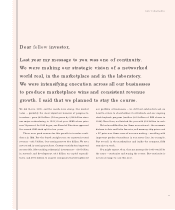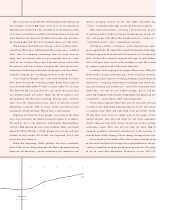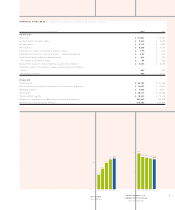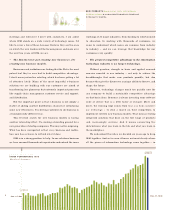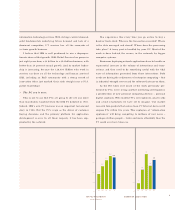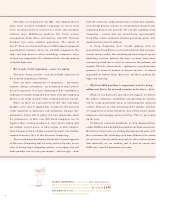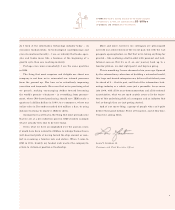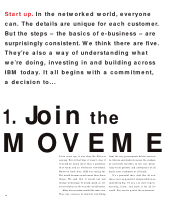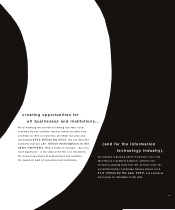IBM 1998 Annual Report Download - page 9
Download and view the complete annual report
Please find page 9 of the 1998 IBM annual report below. You can navigate through the pages in the report by either clicking on the pages listed below, or by using the keyword search tool below to find specific information within the annual report.
7
information technology services. With its huge current demand,
solid fundamentals underlying future demand and lack of a
dominant competitor, I/ T services has all the earmarks of
a classic growth business.
I believe that IBM is well positioned to win a dispropor-
tionate share of that growth. IBM Global Services has grown in
just eight years from a $4billion to a $24 billion business, with
better than 20 percent annual growth. And its market leader-
ship is increasing, because the 126,000 IBMers who work in
services can draw on all the technology and human assets of
IBM, including an R&D community with a strong record of
innovation (they just marked their sixth straight year of U.S.
patent leadership).
• The PC era is over.
This is not to say that PCs are going to die off, any more
than mainframes vanished when the IBM PC debuted in 1981.
Indeed, IBM’s own PC business was an important turnaround
story in 1998. But the PC’s reign as the driver of customer
buying decisions and the primary platform for application
development is over. In all those respects, it has been sup-
planted by the network.
You experience this every time you go online to buy a
book or trade stock. Where is the transaction executed? Where
is the data managed and stored? Where does the processing
take place? A teeny part is handled by your PC. Most of the
work is done behind the scenes, in the network, by bigger
computer systems.
Businesses deploying network applications have to handle an
exponential increase in the volume of interactions and trans-
actions, and they need to do something useful with the tidal
wave of information generated from those interactions. Both
needs are driving the rediscovery of enterprise computing – that
is, industrial-strength servers and the software that runs on them.
As the Net takes over much of the work previously per-
formed by PCs, we’re seeing another interesting development:
a proliferation of new personal computing devices – personal
digital assistants, Web-enabled TVs, screenphones, smart cards
and a host of products we have yet to imagine. One market
research firm predicts that sales of non-PC Internet devices will
surpass PCs within five years. This explosion of “information
appliances” will bring computing to millions of new users –
perhaps a billion people – faster and more affordably than the
PC could ever have taken us.
CAPITAL INVESTMENTS
($ in billions)
’94 ’95 ’96 ’97 ’98
3.1
4.7
5.9
6.8 6.5
NUMBER OF ACQUISITIONS
’94 ’95 ’96 ’97 ’98
3
10
18
12
15





